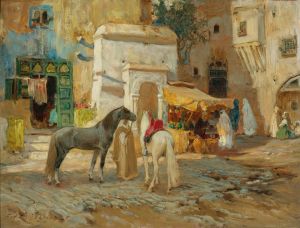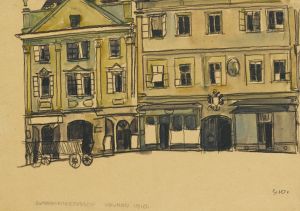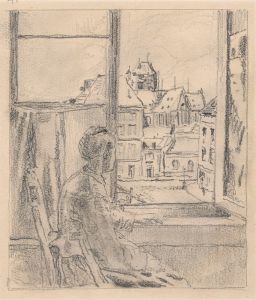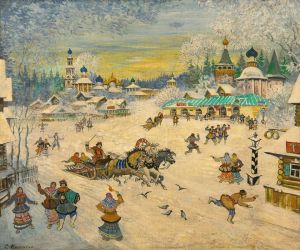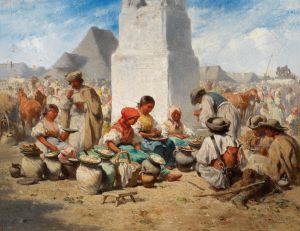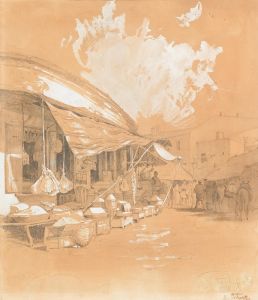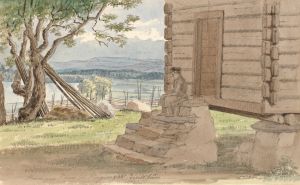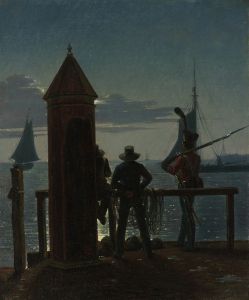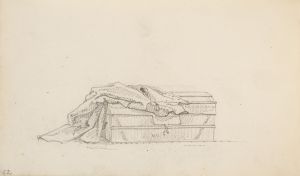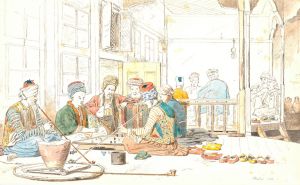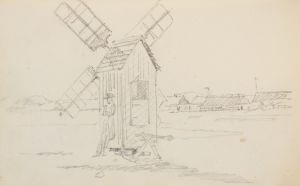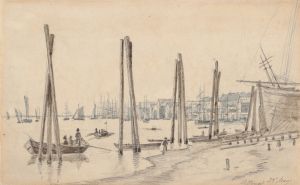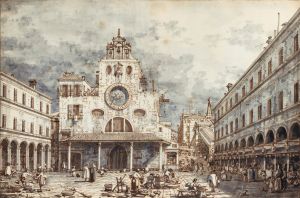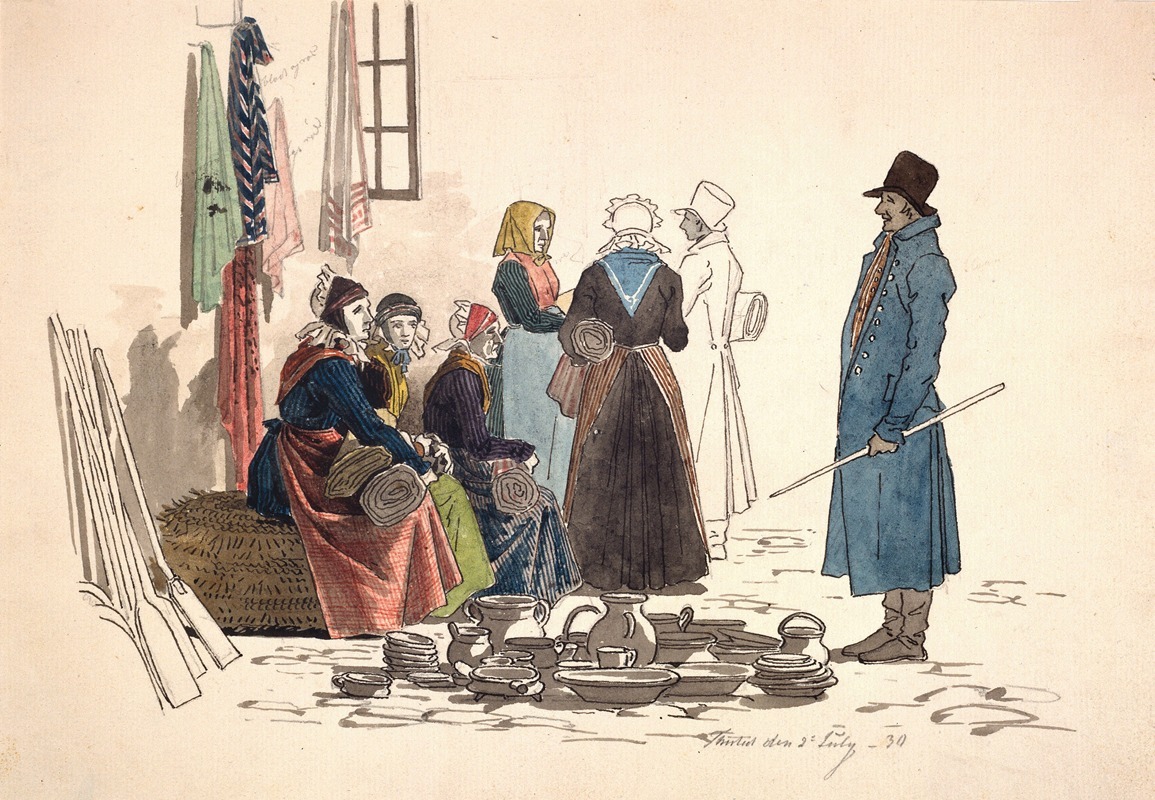
Scene fra torvepladsen i Thisted
A hand-painted replica of Martinus Rørbye’s masterpiece Scene fra torvepladsen i Thisted, meticulously crafted by professional artists to capture the true essence of the original. Each piece is created with museum-quality canvas and rare mineral pigments, carefully painted by experienced artists with delicate brushstrokes and rich, layered colors to perfectly recreate the texture of the original artwork. Unlike machine-printed reproductions, this hand-painted version brings the painting to life, infused with the artist’s emotions and skill in every stroke. Whether for personal collection or home decoration, it instantly elevates the artistic atmosphere of any space.
"Scene fra torvepladsen i Thisted" is a painting by the Danish artist Martinus Rørbye, who was an influential figure in the Danish Golden Age of painting. Rørbye was known for his detailed and atmospheric depictions of everyday life, landscapes, and architecture, often capturing the essence of Danish culture and society in the 19th century.
This particular painting, whose title translates to "Scene from the Market Square in Thisted," is a fine example of Rørbye's ability to portray the charm and character of Danish towns. Thisted is a town located in the northwestern part of Jutland, Denmark, and during the 19th century, it was a bustling market town. Rørbye's work captures the vibrancy and activity of the market square, a central hub of social and economic life in the town.
The painting is characterized by its attention to detail and the use of light and shadow to create depth and atmosphere. Rørbye's skillful use of color and composition brings the scene to life, allowing viewers to get a sense of the daily activities and interactions that took place in such a setting. The market square would have been a place where townspeople gathered to buy and sell goods, exchange news, and socialize, and Rørbye's depiction likely reflects these aspects of community life.
Rørbye was a student at the Royal Danish Academy of Fine Arts in Copenhagen, where he was influenced by the teachings of Christoffer Wilhelm Eckersberg, often referred to as the father of Danish painting. Eckersberg's emphasis on realism and the study of nature is evident in Rørbye's work. Rørbye traveled extensively throughout Denmark and Europe, drawing inspiration from the places he visited and incorporating these influences into his art.
"Scene fra torvepladsen i Thisted" is part of a broader body of work by Rørbye that documents various locations and scenes from his travels. His paintings are valued not only for their artistic merit but also for their historical significance, providing a window into the past and offering insights into the cultural and social dynamics of the time.
Rørbye's contributions to Danish art were significant, and his works are held in high regard. They are part of collections in several museums, including the National Gallery of Denmark, which houses many of his paintings. His ability to capture the essence of a scene with precision and sensitivity has earned him a lasting place in the history of art.
Overall, "Scene fra torvepladsen i Thisted" exemplifies Martinus Rørbye's talent for capturing the spirit of a place and its people, making it a valuable piece of cultural heritage that continues to be appreciated by art enthusiasts and historians alike.





